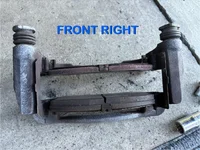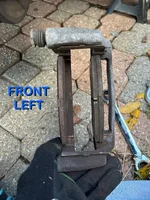Davidiot
Ballistic Reentry Vehicle
- :
- 2020 CX-5 GT PP
I first noticed a cyclic rubbing/dragging sound seemingly coming from one or the other of my front wheels while driving with the radio off one day. The rub seemed to be consistent with each revolution of a wheel (the frequency of the rubbing sound quickly increasing with the vehicle’s speed). This was soon followed by some aggressive steering-wheel shaking during braking, making the culprit much more certain. Only 24,000 miles since I bought my CX-5 brand-new, I wasn’t expecting to need brakes yet, much less new rotors
Since the first 6,000 miles, though, my car’s really only seen town miles, almost exclusively stop & go, so I had to consider that perhaps this mileage could be normal, given my circumstances? Not sure how I managed to warp (at least one of the) rotors without ever hearing any warning sounds from brake wear indicators; but might that be because Mazda doesn’t install them?
I went ahead and bought new front rotors and a set of brake pads for all 4 wheels, and borrowed a pair of jack stands and a couple of torque wrenches so I could get started on doing the work myself. Having only two jack stands and the scissor jack from my trunk, I haven’t been able to take a look at the rear brakes yet; but I did pull off the fronts earlier today.
I am in SHOCK at what I found. Wtf, Mazda?
The inside pads on both the front left and front right wheels are worn down completely; while the outside pads are still almost as fat as the brand new replacements I just bought. How could this have happened with factory-installed brakes? What other parts am I now looking at having to replace to make sure the same thing doesn’t happen again to my new rotors and pads?


